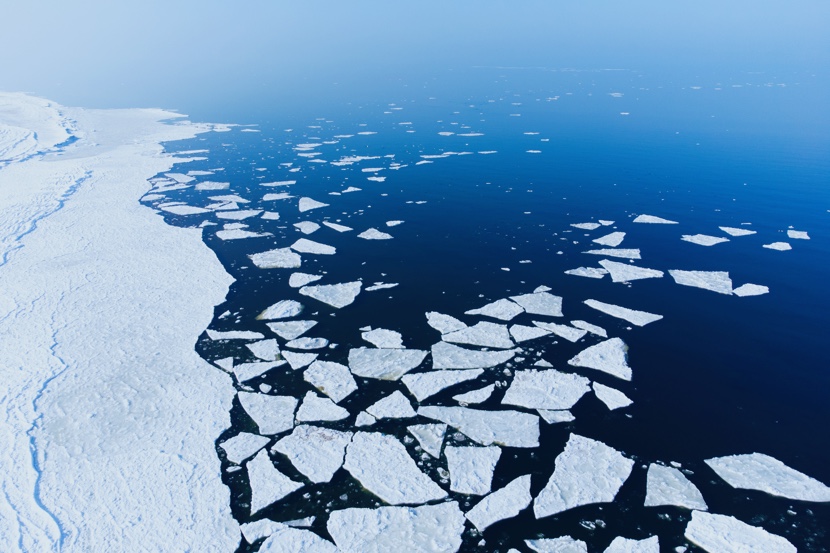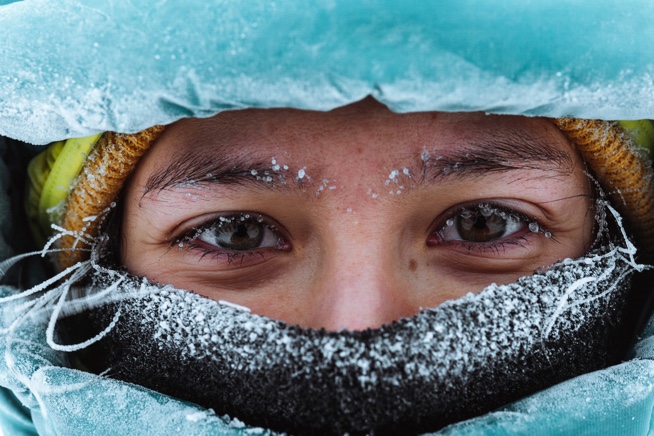
The Arctic is a “sentinel” environment because it changes much faster than other regions of the planet. Understanding what happens in the Arctic helps science predict what might happen elsewhere. The Arctic is a privileged natural laboratory for oceanographers, climatologists, marine biologists and for all environmental sciences. The Arctic is more sensitive to warming than any other region, a player and a victim of climate change at the same time. A small increase in temperature at the Earth’s poles increases the general rise of temperatures, creating a warming acceleration effect.Why? These regions are dominated by very sensitive parameters for the planet's temperature balance: ice and oceans, and their interaction with the atmosphere.
It is easy to see that a large white surface such as the polar ice reflects 80% of the sun's heat back into the atmosphere. As the ice melts, a larger dark surface is exposed and the ocean, which is darker than the ice, retains 90% of the heat, and it becomes warmer. A warm ocean causes the outside temperature to rise and it is the interaction between these surfaces that causes a multiplier effect of the warming, a feedback mechanism or Arctic acceleration that repeats itself until a point of no return: the total melting of the polar ice cap. The main forecasting models indicate that the Arctic Ocean could have undergone full deglaciation by 2030.

The rise of global average temperatures is mainly the result of the emission into the atmosphere of so-called greenhouse gases, including C02 and methane. Greenhouse gases trap the residual heat from these emissions and re-radiate it in all directions. Methane pollution, the most dangerous greenhouse gas, is of particular concern in the Arctic.
As long as it remains frozen at the bottom of the ocean, this gas does not pose a serious threat, but it is actually a time bomb. As temperatures rise, it melts, forming dangerous gas bubbles that move to the surface, contributing to making the air and sea warmer and warmer, triggering a powerful mechanism that accelerates warming.
Global warming and air pollution are not the only threats to the Arctic world.
Marine pollution caused by the presence of micro- and macro-plastics is a microscopic environmental problem. Plastic is currently the most abundant non-biodegradable material among all the contaminants that pollute the Earth's oceans. On the previous expedition, the Polarquest team sampled microplastics and plastics visible to the naked eye even on the edge of the polar ice pack, at the record latitude of 82°07° North, north of the Svalbard archipelago.

The populations closest to the North Pole are the first to be affected by the visible changes in the Arctic, with consequences on their way of life, both in terms of traditions and the sustainability of their production activities.
These climate extremes in temperate zones are known as Arctic Amplification: About 93% of waste heat ends up in the oceans, which cover most of the Earth's surface, raising its temperature and causing a wide range of effects that trigger irreversible processes:

studying environmental issues in the Arctic. Experienced explorers with a passion for the Arctic Ocean and its conservation, led by Paola Catapano, an Arctic reporter and CERN member, will sail aboard the sailing ship Best Explorer. This special vessel, a 51-metre cutter, was the second to circumnavigate the Arctic in a clockwise direction. It is equipped with the most innovative technology for exploration in the most remote areas of the planet. Led by skipper Nanni Acquarone, it will host 12 experts and scientists for field researc